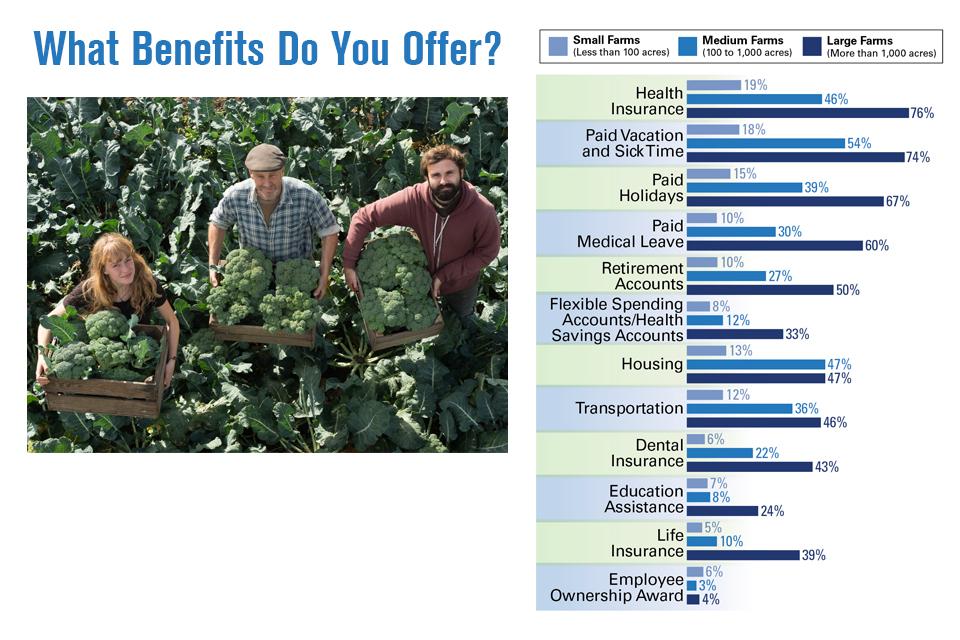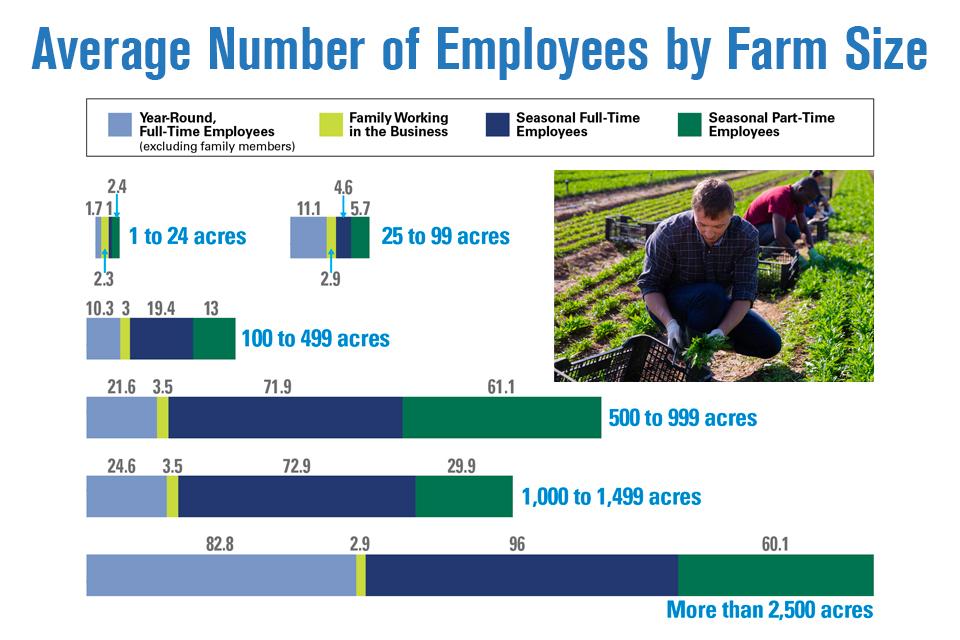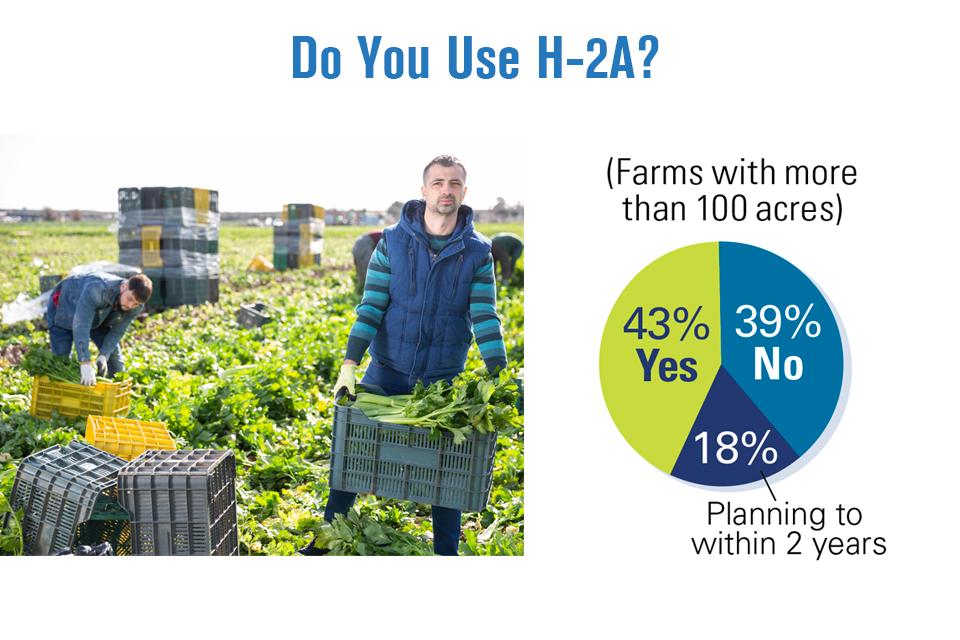Are You Competitive? Here’s What Vegetable Growers Offer Workers
For the first time, American Vegetable Grower asked you about which benefits you offer your workers. We asked about 10 common worker benefits, plus two ag-centric ones (housing and transportation).
As you can see in the chart below, farm size predicts how likely it is for an operation to offer benefits of any kind.
We subdivided these benefits by types of employees:
- Full-time, year round
- Part-time, year round
- Seasonal full time
- Seasonal part time

Year-round, full-time employees were the most likely to receive all benefits, save for housing and transportation. Those two benefits went to full-time, seasonal employees.
Some states mandate that farms offer health insurance and paid time off to their employees. Naturally, operations located in regions dominated by these states offered these two benefits at much higher rates.
Average Number of Employees

This past year, there was a significant jump in the number of year-round employees between the largest farms and all others. Operations with more than 2,500 acres employed 83 year-round workers. In comparison, farms between 500 acres and 2,500 acres tend to have between 22 and 25 year-round employees.
Farms are also unlikely to hire part-time, seasonal workers in significant numbers until they reach at least 500 acres in size.
H-2A on the Rise

More and more growers are turning to the H-2A program to secure reliable workers. Even smaller farms use the program. In fact, almost 20% of farms with 25 to 99 acres use the program, with another 9% planning to tap into H-2A.
Larger farms are still more likely to use H-2A. A full 43% of all vegetable operations with more than 100 acres rely on the program. That’s up six percentage points from just last year. Five years ago, only 28% of the same group reported using H-2A — up 15 points, or a 54% increase.
What’s striking is how many larger growers are planning to enter the program for the first time within the next two years. A whopping 25% of those with more than 2,500 acres say they’ll adopt H-2A within a couple years, followed by 19% of farms with 1,000 to 2,499 acres.










